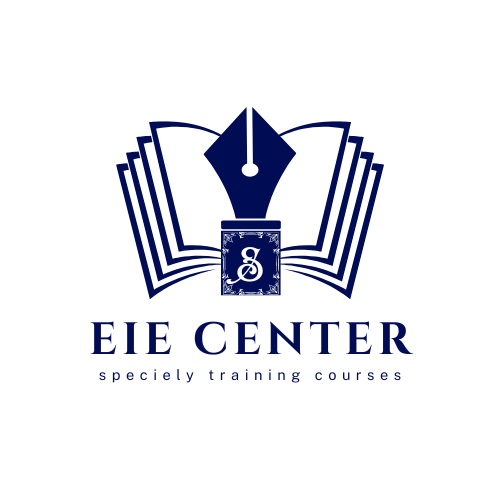Creative Strategic Information Technology IT Leadership Course

About Course
This creative strategic information technology IT leadership course is designed to provide IT leaders and professionals with transformational tools and techniques to help them maximize their and their team’s creative potential.
The starting point for this creative strategic information technology IT leadership course is self-discovery; participants will work on the inside first and then focus on the business world, leveraging strategic skills training and embedding creative strategy development into their practices.
Course Objectives
At the end of this creative strategic information technology IT leadership course, the participants will be able to:
- Set out their leadership brand.
- Demonstrate innovative methods for harnessing others’ creative potential.
- Articulate a vision using multiple sensory representations.
- Communicate their vision in refreshing and engaging ways.
- Identify critical components of a strategically aligned IT department.
- Apply value and performance measurement techniques.
- Develop meaningful recruitment and retention policies.
- Evaluate technology solutions, vendor selection, and outsourcing.
Targeted Competencies
- Creating and communicating an inspiring leadership vision.
- Defining IT strategy and setting out techniques for leading an agile IT organization.
- Making sound strategic management and technical decisions and leveraging IT resources effectively.
- The emphasis is on the strategic importance of information services to the enterprise and their contribution as a critical partner in meeting business goals.
- Identifying opportunities for new thinking and learning to challenge the givens without breaking the bonds.
- Improving negotiation skills and overcoming departmental and organizational obstacles to success.
Course Content
Unit 1: Creative Problem-Solving
- Leadership reality assessment.
- Leadership vs. management.
- Understanding our brain function.
- Myths of creativity.
- The limitations of the rational.
- Divergent approaches to problem-solving.
- Letting go of logic.
- Analogous thinking modes.
- Convergent and divergent modes.
Unit 2: Overcoming Personal Blockers to Creativity
- Sigmoid curve.
- Lifecycle model.
- Continuous improvement.
- Breakthrough step change.
- Self-awareness and the nature of the ego.
- Personal goal alignment.
- Adoption and innovation: personal preferences for creating meaning.
- Exploring attitudes to risk.
- Left – and right-brain thinking.
Unit 3: Developing the Vision Creatively
- Six thinking hats.
- Using differing thinking styles.
- “JoHari’s window”.
- The business plan process and creating a vision.
- Harnessing the power of the team.
- Organizational culture and its influence on innovation.
- Letting go of the ego.
- Working with different creative preferences.
Unit 4: Communicating the Vision Creatively
- The 7-Step Creative Process.
- Models of communication.
- Viral visioning.
- Authenticity and trust.
- Creativity tools, techniques and strategy.
- Letting go of the vision.
- Leading without directing.
- Possible leadership beliefs.
Unit 5: From Ideas to Action: Creativity and Change
- Motivation.
- Hierarchy of needs.
- Overcoming organizational barriers to creativity and change.
- Nurturing a learning environment.
- Is Money a motivator?
- Personality profiling.
- Building a creative consensus.
- Engaging stakeholders creatively on strategic information technology leadership.
- Influencing and motivating through change.
Unit 6: Leading and Managing the IT Department
- Understand the challenges of the IT manager.
- How do you value IT services?
- Communicate IT value to upper management, peers, and end-users.
- Understand the responsibilities of the IT team leader.
Unit 7: Managing Technology
- Understand the strategy for managing existing technology.
- Know when to develop and adopt new technologies.
- Be aware of how to manage assets effectively.
Unit 8: Using Influence
- Understand the different types of influential power.
- Be aware of the various influence strategies.
- Select the most effective influence strategy for the situation.
- Understanding negotiation tactics and techniques.
- Use influence effectively to thrive as an IT manager.
Unit 9: Strategic Decision Making
- Apply strategic decision-making.
- Recognizing strategic decisions and initiatives.
- Apply strategic decision-making to vendor selection.
- Understand when to outsource.
Unit 10: Developing the IT Strategic Plan and Budget
- Using the mission as an IT driver.
- Defining the customer profile.
- Understanding the partnership model.
- Creating a strategic plan.
- Planning and budgeting issues.
Unit 11: Managing IT Quality
- Understanding the importance of managing by process.
- Understand the definitions of quality.
- Applying maturity models.
- Using process management.
- Applying international standards.
Unit 12: Building the IT Management Team
- Evaluating IT performance and metrics.
- Understanding delegation and motivation.
- Team building.
- Managing the management team and stakeholders.
Unit 13: IT Project Management
- The importance of project management on strategic information technology leadership.
- Defining project manager talents and skills.
- Understanding the principles of project management.
Unit 14: IT Performance Metrics
- Developing a measurement strategy.
- Creating a Best Practices organization.
- Deploy metrics.
- Managing by facts and results.
- Integrate metrics into the strategic plan.
Unit 15: Common Pitfalls and Lessons Learned
- Balancing technical and corporate requirements.
- Balancing tactical and strategic decisions.
- Evaluating new and existing technologies.
- Balancing management styles and culture.
